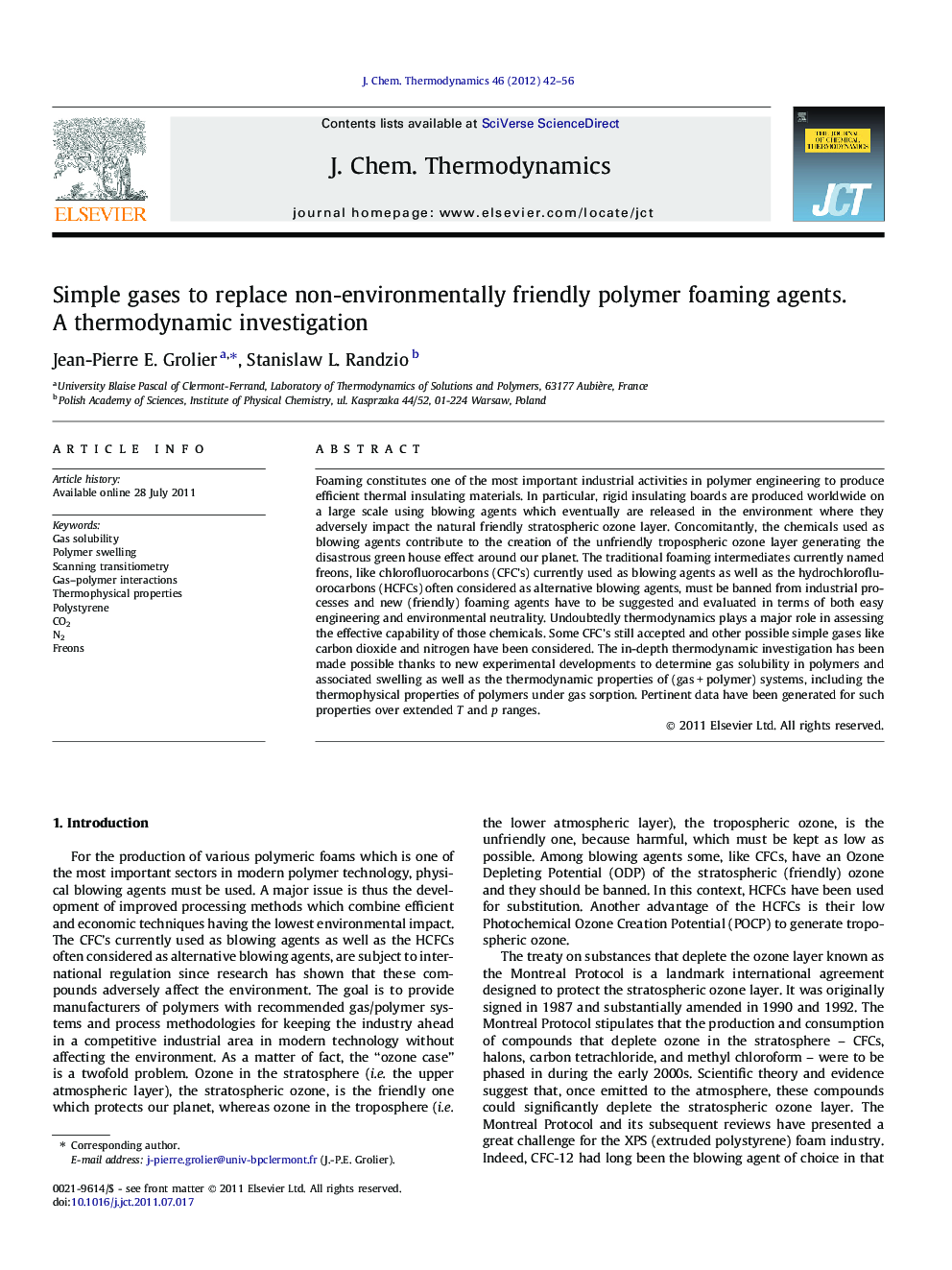| Article ID | Journal | Published Year | Pages | File Type |
|---|---|---|---|---|
| 216013 | The Journal of Chemical Thermodynamics | 2012 | 15 Pages |
Foaming constitutes one of the most important industrial activities in polymer engineering to produce efficient thermal insulating materials. In particular, rigid insulating boards are produced worldwide on a large scale using blowing agents which eventually are released in the environment where they adversely impact the natural friendly stratospheric ozone layer. Concomitantly, the chemicals used as blowing agents contribute to the creation of the unfriendly tropospheric ozone layer generating the disastrous green house effect around our planet. The traditional foaming intermediates currently named freons, like chlorofluorocarbons (CFCs) currently used as blowing agents as well as the hydrochlorofluorocarbons (HCFCs) often considered as alternative blowing agents, must be banned from industrial processes and new (friendly) foaming agents have to be suggested and evaluated in terms of both easy engineering and environmental neutrality. Undoubtedly thermodynamics plays a major role in assessing the effective capability of those chemicals. Some CFCs still accepted and other possible simple gases like carbon dioxide and nitrogen have been considered. The in-depth thermodynamic investigation has been made possible thanks to new experimental developments to determine gas solubility in polymers and associated swelling as well as the thermodynamic properties of (gas + polymer) systems, including the thermophysical properties of polymers under gas sorption. Pertinent data have been generated for such properties over extended T and p ranges.
► The PVT-vibrating wire technique and PVT-scanning transitiometry. ► Polymer swelling with measured gas sorption and gas–polymer interaction energies. ► Experimental measurements up to 373 K and 100 MPa. ► Hydrostatic and plasticization effects under high pressure gas and induced Tg-shifts. ► Thermodynamic study of the (gas + polymer) systems polystyrene with CO2, N2, and freons.
